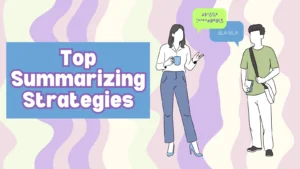Writing an executive summary for a proposal is like painting a picture of your project’s soul, offering your audience a glimpse of its essence without going through pages of facts. In simple words, it’s compressing the proposal’s mission, objectives, solutions, and future goals into a logical, understandable format.

✅ AI Essay Writer ✅ AI Detector ✅ Plagchecker ✅ Paraphraser
✅ Summarizer ✅ Citation Generator
| The process consists of three main steps: establishing the proposal’s basic goal and vision, defining objectives, presenting solutions, and closing with a forward-looking statement. |
What is an Executive Summary for a Proposal?
In business documentation, every paper is important because it adds complexity and value to how an organization functions and communicates. Proposals are especially important because they work like plans for future projects. They show what the company hopes to do, the challenges it might face, and how it plans to overcome them. Proposals should reveal the strategic potential of a department or a company as a whole, explaining why something should be done, what it is, and how it will be achieved.
An executive summary for a proposal breaks down this conversation to its basics. It’s the initial handshake between concept and execution, providing a bird’s-eye view of the project’s scope, strategy, and expected impact. This section of the text matters most since it determines whether the reader will investigate further or reject the idea. It captures the essence, making every word count to catch the reader’s attention and confidence.
How to Write an Executive Summary for a Proposal
Writing an executive summary includes creating a brief but convincing overview that captures the essence of your project. The goal is to provide a snapshot that persuades the reader to engage with the full proposal. To do this effectively, you need to focus on several key steps:
| 1️⃣ Start with a Clear Purpose | 2️⃣ Outline the Problem or Opportunity |
| Begin by clearly stating the purpose of your proposal. This sets the stage for what you aim to achieve, giving your reader a clear understanding of the significance of your project from the outset. | Briefly describe the problem your project addresses or the opportunity it seizes. This helps to establish the context for your proposal, illustrating the need for your proposed solution. |
| 3️⃣ Present Your Solution | 4️⃣ Detail the Benefits |
| Highlight your proposed solution in a way that is both compelling and succinct. This should convey not only what your project involves but also why it stands out as the best way to address the problem or opportunity at hand. | Explain the benefits of your proposal. This includes the direct outcomes you anticipate as well as the broader impact your project could have. Make the case for why your proposal is not just viable but valuable. |
| 5️⃣ Summarize the Costs and Timeline | 6️⃣ Conclude with a Call to Action |
| Without going into too much detail, provide an overview of the project’s cost and timeline. This gives readers a sense of the scope and scale of your offer, as well as its feasibility. | Finish your executive summary with a persuasive call to action. Encourage your reader to consider the full proposal for a comprehensive understanding of your project. This is your final opportunity to motivate the reader to engage further with your proposal. |
Remember that the executive summary is often the first (and maybe only) section of your proposal that stakeholders will read. It should be engaging, informative, and written in a way that invites the reader to look deeper into the specifics of your proposal. Keep it short, focus on the main ideas, and make sure it looks like a captivating start to the larger project you’re proposing.
Look at the example below to get an idea of how it may look like:
GreenTech Solutions: Leading the Charge in Renewable EnergyPurpose: The purpose of GreenTech Solutions’ proposal is to initiate a comprehensive renewable energy program designed to significantly reduce carbon emissions and promote sustainable energy use within our community. Problem Statement: The adverse effects of climate change and the overreliance on fossil fuels are undeniable. Our community faces increasing energy costs, environmental degradation, and a pressing need to shift towards more sustainable energy sources. Proposed Solution: GreenTech Solutions proposes the installation of solar panels and wind turbines across the community. This initiative will not only harness the power of renewable energy but also ensure that our energy needs are met in an environmentally friendly manner. Our approach combines cutting-edge technology with community engagement to create a sustainable energy model that can be replicated in other regions. Benefits:
The total estimated cost for the project is $5 million, with a projected timeline of 24 months from initiation to completion. This includes the procurement of equipment, installation processes, and community workshops for education and engagement. Conclusion: GreenTech Solutions invites you to join us in this revolutionary project. By supporting our proposal, you’re not just investing in renewable energy; you’re investing in a sustainable future for our community and the planet. We encourage you to review our full proposal, which outlines the detailed plan, projected outcomes, and specific ways you can contribute to making this vision a reality. Together, we can lead the charge towards a cleaner, greener, and more sustainable world. |
Executive Summary: Best Writing Practices
Creating an executive summary that stands out involves more than summarizing the contents of your proposal. It requires strategic writing and a thorough awareness of your target audience’s demands and interests. Here are some great practices for improving your executive summary.
- Understand Your Audience: Tailor your summary to the knowledge level and interests of your audience. Whether they are investors, partners, or potential clients, understanding what motivates them will help you highlight the most persuasive elements of your proposal.
- Lead with Strength: Start with the most compelling aspect of your proposal, whether it’s the innovation of your solution, the urgency of the problem, or the potential for significant impact. This will capture the reader’s interest from the beginning.
- Be Clear and Concise: Avoid jargon and overly complex language. Your goal is to communicate your proposal’s value proposition as succinctly as possible. Every sentence should serve a purpose, either by adding new information or reinforcing a key point.
- Use Active Voice: Active voice makes your writing more direct and dynamic, which is essential in an executive summary. It helps convey confidence and decisiveness.
- Emphasize Benefits, Not Features: Focus on the benefits your proposal brings to the table, rather than just listing its features. Explain how your project addresses a specific need or problem and why it represents a valuable opportunity for the reader.
- Highlight Key Data: Use key statistics or findings to support your claims and add credibility to your proposal. This can include market research, projected outcomes, or case studies that underscore the potential success of your project.
- Visual Elements: Consider including charts, graphs, or bullet points to break up text and make your summary more visually attractive. This can also help highlight important data or benefits.
- End with a Strong Close: Conclude with a clear call to action. Tell the reader exactly what you want them to do next, whether it’s to read the full proposal, schedule a meeting, or take a specific step towards implementation.
- Review and Revise: Writing an effective executive summary often requires several drafts. After your first draft, step away for a bit, then come back to it with fresh eyes. It can also be beneficial to have someone else review it to ensure clarity and impact.
- Consistency in Tone: Make sure that the tone of your executive summary matches the tone of your full proposal. Consistency helps reinforce your message and brand identity.
FAQ
Follow us on Reddit for more insights and updates.





Comments (0)
Welcome to A*Help comments!
We’re all about debate and discussion at A*Help.
We value the diverse opinions of users, so you may find points of view that you don’t agree with. And that’s cool. However, there are certain things we’re not OK with: attempts to manipulate our data in any way, for example, or the posting of discriminative, offensive, hateful, or disparaging material.